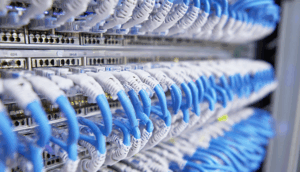In the intricate landscape of modern manufacturing and healthcare, the reliability and performance of equipment are paramount. Underlying the seamless operation of these systems are specialized cables designed to withstand harsh environments and transmit crucial data with unwavering accuracy. Industrial and medical cables, often overlooked, are the unsung heroes ensuring continuous operation, patient safety, and data integrity. These cables aren’t just wires; they are meticulously engineered components designed to meet stringent regulatory requirements and demanding operational conditions.

Industrial data communication cables play a vital role in connecting various components within a manufacturing plant, enabling real-time monitoring, control, and automation. Consider the complex network of sensors, actuators, and controllers in a robotic assembly line. These components rely on robust cables to transmit data reliably, ensuring synchronized movements and minimizing downtime. The cables must withstand constant flexing, exposure to chemicals, and extreme temperatures, all while maintaining signal integrity. Furthermore, the rise of Industry 4.0, with its emphasis on interconnected devices and data-driven decision-making, has further amplified the importance of high-performance industrial cables capable of handling large volumes of data with minimal latency.
Medical cables face an even more critical challenge: ensuring patient safety. These cables are used in a wide range of medical devices, from patient monitoring systems to diagnostic imaging equipment. The cables must be biocompatible, resistant to sterilization processes, and capable of transmitting sensitive data without interference. Imagine the implications of a faulty cable in an EKG machine or a defibrillator. The accuracy and reliability of these cables are literally a matter of life and death. Moreover, the increasing use of minimally invasive surgical techniques has spurred the development of specialized medical cables that are flexible, durable, and able to navigate through narrow spaces within the human body.

The advantages of using high-quality industrial and medical cables extend beyond simply maintaining operational efficiency and patient safety. Properly shielded cables can minimize electromagnetic interference (EMI), preventing disruptions to sensitive electronic equipment. This is particularly crucial in medical environments where multiple devices are operating simultaneously. Furthermore, durable cables can withstand harsh environmental conditions, reducing the need for frequent replacements and minimizing maintenance costs. Investing in reliable cables is an investment in the long-term performance and reliability of critical equipment.
Selecting the right industrial or medical cable requires careful consideration of various factors, including the application, the environment, and the regulatory requirements. Factors such as cable type (e.g., Ethernet, coaxial, fiber optic), shielding type (e.g., braided, foil), and insulation material (e.g., PVC, polyurethane) must be carefully evaluated. Consulting with cable manufacturers and industry experts can help ensure that the selected cable meets the specific needs of the application. By understanding the critical role that these cables play and taking the time to select the right solution, businesses can unlock significant improvements in efficiency, safety, and reliability.